KENNEDY SPACE CENTER, FL – Following a picture perfect launch on Dec. 5, 2014, flawless test flight, and safe splashdown in the Pacific Ocean, NASA’s first Orion spacecraft has been recovered from the ocean and brought back onshore in California.
Near the conclusion of its two orbit, 4.5 hour maiden test flight on the Exploration Flight Test-1 (EFT-1) mission, the capsule fired its thrusters and began the rapid fire 10 minute plummet back to Earth.
During the high speed re-entry through the atmosphere, Orion reached speeds approaching 20,000 mph (32,000 kph), or approximating 85% of the reentry velocity for astronauts returning from voyages to the Red Planet.
The capsule endured scorching temperatures near 4,000 degrees Fahrenheit in a critical and successful test of the 16.5-foot-wide heat shield and thermal protection tiles.
The entire system of reentry hardware, commands, and parachutes performed flawlessly.
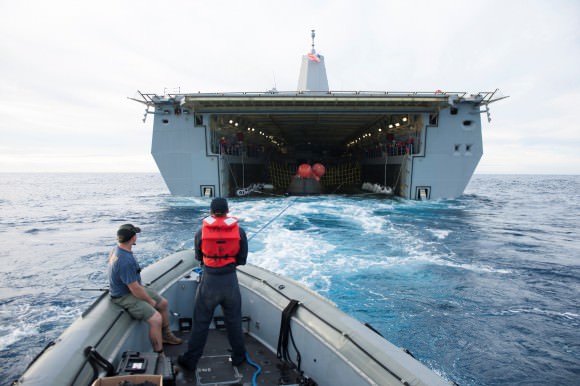
Finally, Orion descended on a trio of massive red and white main parachutes to achieve a statistical bulls-eye splashdown in the Pacific Ocean, 600 miles southwest of San Diego, at 11:29 a.m. EST that was within one mile of the touchdown spot predicted by mission controllers after returning from an altitude of over 3600 miles above Earth.
The main parachutes slowed Orion to about 17 mph (27 kph).
The Orion EFT-1 spacecraft was recovered by a combined team from NASA, the U.S. Navy, and Orion prime contractor Lockheed Martin.
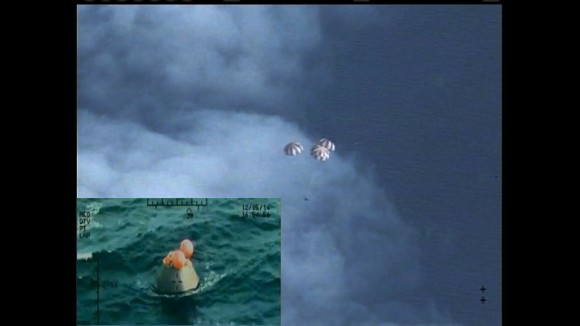
The only minor glitch was the failure of one of the three crew module uprighting bags to inflate. Nevertheless the capsule was in an upright position in the ocean waters.
Navy teams in Zodiac boats with divers approached the Orion after it had cooled down, hooked a sea anchor and tether lines onto the outside and maneuvered it into the flooded well deck of the USS Anchorage.
Once safely inside, Orion was placed inside its recovery cradle for transport back to a pier at US Naval Base San Diego.
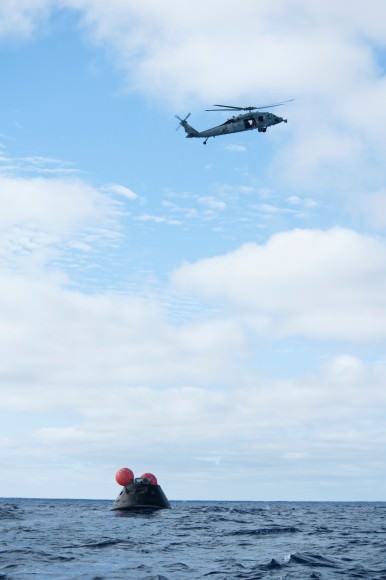
The capsule will be hauled back to its launch site at the Kennedy Space Center, likely by Christmas, Larry Price, Lockheed Martin Deputy Orion Program Manager told me.
At KSC it will be refurbished and launched again on a high altitude abort test in 2018 to test the launch abort system.
Watch for Ken’s ongoing Orion coverage from onsite at the Kennedy Space Center about the historic launch on Dec. 5.
Stay tuned here for Ken’s continuing Earth and planetary science and human spaceflight news.
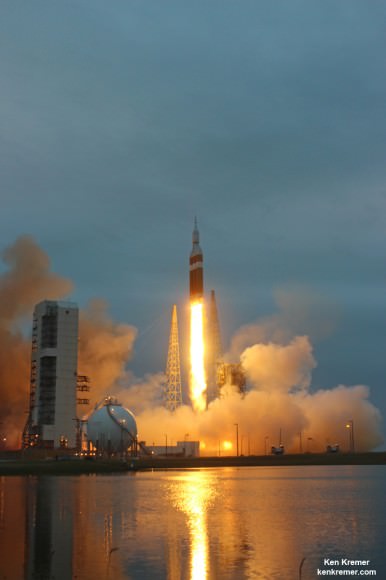
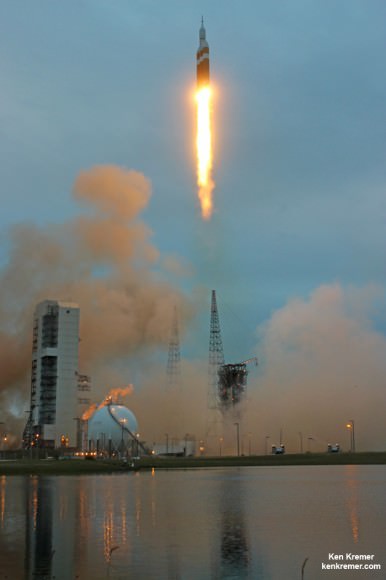

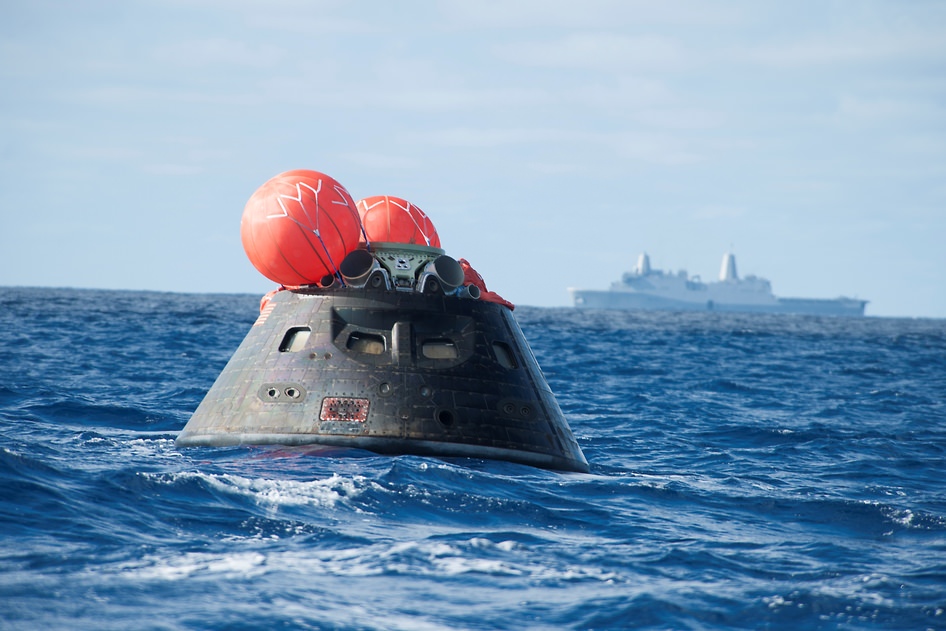
I LIKE the idea of using the same capsule more than once! Ken, do you know if the Russians reuse (any parts) the Soyuz capsules?
I just read at brand ‘X’ aka ‘Spaceflight Now’, that this capsule’s next flight will be with a donated (by the USAF) Peacekeeper rocket. Will that flight actually orbit Earth, or is it a suborbital flight?
Aqua – the next flight is just an abort test as I wrote, not orbital. more to follow